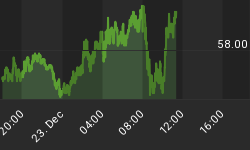At the super-simplistic level, all natural phenomena around us can be classified into two categories: linear and non-linear. Linear systems are easy to understand. Suppose we need to rotate the valve of the shower by 5 degrees to make the water a bit warm. We expect that to get the water warmer by the same amount, the valve needs to be turned by another 5 degrees.
Nonlinear systems are more complex. You probably have used a compass that has a small magnet inside. Left by it, the magnet orients in the north-south direction, where the pole painted red always points to the north. Do you know that it is possible to change the north-south polarity of a tiny magnet, so that red pointer starts to show south? Here is how. Hold the small magnet tight and then bring it under the influence of another much more powerful magnet. If relative orientations are right, the powerful one will force the weak one to reverse its north-south poles.
In real life, an electric coil takes the place of the powerful magnet. Electric coil can act as magnet, when you pass current through it. Modulating the level of current varies its strength. Strange thing happens when we use this to reverse polarity of a tiny magnet. If the electric current is gradually increased from zero, the small magnet under its influence shows no change for a while. When the magnetic strength of the coil crosses a threshold, all of a sudden the tiny one reverses polarity. You do not want your shower to behave this way, spraying cold water on you while you keep turning the knob and then all of a sudden starting to pour hot, boiling water on your body!!
The magnet is an example of how nonlinearity manifests in nature and there are plenty more. The world around us is highly nonlinear and so are the financial markets. However, our mind is not trained to think or expect nonlinearity. We assume everything is linear or quasi-linear. When we make projections about the future, we extend the past. Longer the trend persists, the stronger foothold it grabs in our mind. "Technology companies have been doing well for last ten years. Therefore they must be good for another ten years." "House prices have been going up from 1980s. Therefore, it must go up for another 20 years" (or translate that to 'ever').
Properties of the nonlinear systems sometimes deceive us to think that way. Nonlinear systems almost always act as linear ones except when they make abrupt moves. In case of the magnets in our example, initially when we kept increasing the magnetic force on the tiny magnet, nothing happened for a long time until the sudden change of polarity took place. For financial world, these abrupt movements are so few in number, they often are excused as someone else's fault, Saudis or Enron or whichever scapegoat is coincidentally present at that time.
Of course there are old and educated people with experience, who understand the system by actually getting burnt through a previous attack of market nonlinearity. They do take protections. Only problem is that for many, the memory comes from the previous episode and the protections are also taken for the same. In the collective minds of nation's experts, 70's inflation was the previous episode of 10-year financial disturbance. Therefore, majority of experienced people will try to warn us about the dangers of inflation. Those who went through 30's deflation are far fewer in number and rarely in positions of influence now. In my opinion, deflation is the abrupt move we are least prepared for, but that is the most likely path US economy is ready to follow.
This is how the world behaves and will continue to behave forever, or at least until our minds are ready to project nonlinearly. Nonlinearities and cycles are everywhere in nature. Long-wave economic cycles of stability, inflation, stability, deflation will continue. Students of history will amuse themselves by observing these recurring patterns of human stupidity and regained wisdom.
















